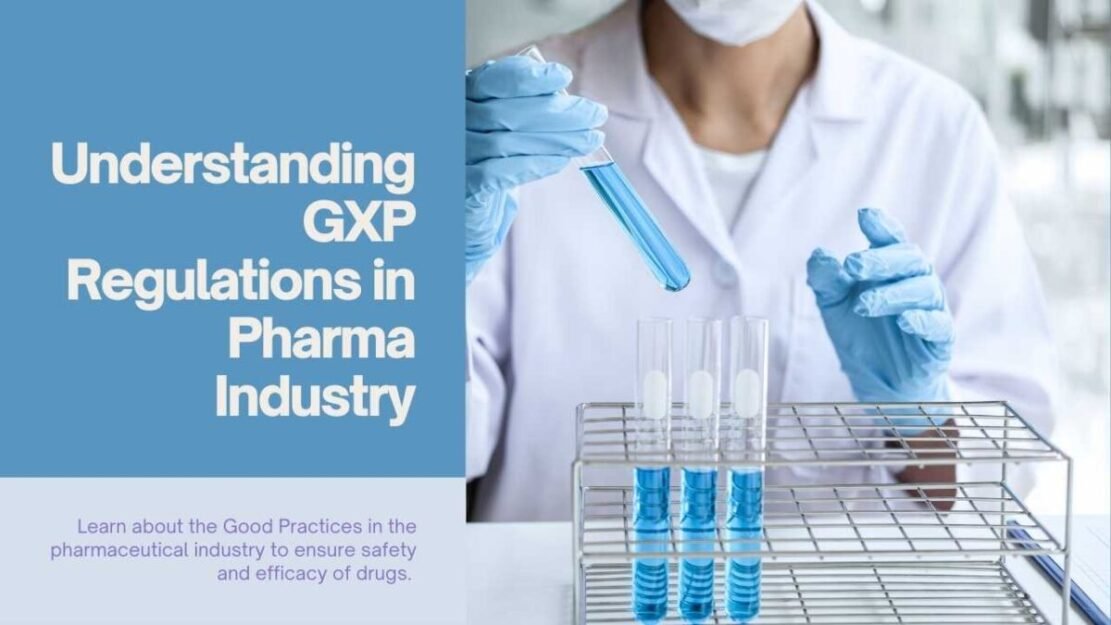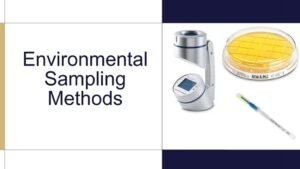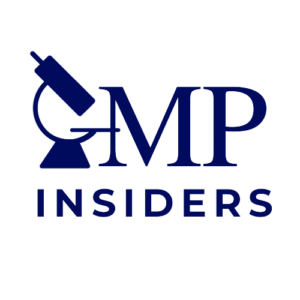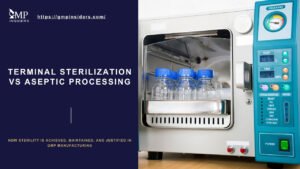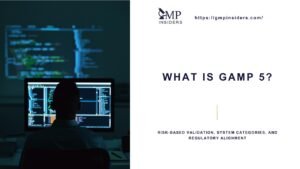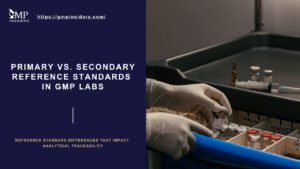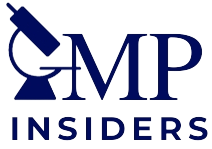The pharmaceutical industry is highly regulated to ensure the safety, efficacy, and quality of drugs and medical products. One of the key regulatory frameworks in the industry is GxP, which encompasses a set of guidelines and regulations that govern various aspects of the pharmaceutical manufacturing, control, storage, and distribution processes.
In this article, we will explore the concept of GxP, its importance in the pharmaceutical industry, the different GxP regulations, and the challenges and solutions for achieving GxP compliance.
What is GxP Compliance?
GxP is a term that represents “Good X Practice,” where the variable “X” can stand for different fields depending on the application of the standards. The most common ones in the pharmaceutical industry are GMP (Good Manufacturing Practice), GLP (Good Laboratory Practice), and GCP (Good Clinical Practice).
GxP compliance refers to the adherence to these regulations and guidelines to ensure the safety, quality, and integrity of pharmaceutical products throughout their lifecycle.
GxP compliance is not optional for pharmaceutical manufacturers. It is a legal requirement enforced by regulatory agencies like the FDA (Food and Drug Administration) in the United States, EMA (European Medicines Agency) in Europe, TGA (Therapeutic Goods Administration) in Australia, and HS-SC (Health Canada – Safety and Compliance) in Canada.
Failure to comply with GxP can result in regulatory actions, including fines, product recalls, and legal consequences.
GxP Regulations in the Pharmaceutical Industry
GxP encompasses several regulations and guidelines to ensure compliance with specific aspects of the pharmaceutical industry. Let’s explore some of the key GxP regulations:
Good Manufacturing Practice (GMP)

Good Manufacturing Practice (GMP) is one of the most significant GxP regulations in the pharmaceutical industry. GMP guidelines define the standards and requirements for the manufacturing, processing, packaging, labeling, and storage of pharmaceutical products.
The goal of GMP is to ensure that products are consistently produced and controlled according to quality standards.
GMP regulations cover various aspects, including:
- Facility design and maintenance
- Equipment qualification and calibration
- Documentation and record-keeping
- Personnel training and qualifications
- Quality control testing and release
- Complaint handling and product recall procedures
- Supplier qualification and management
GMP compliance is crucial for pharmaceutical manufacturers to ensure the safety, efficacy, and quality of their products. Non-compliance can lead to product recalls, regulatory actions, and reputational damage.
Good Laboratory Practice (GLP)

Good Laboratory Practice (GLP) focuses on the quality and integrity of nonclinical laboratory studies conducted to assess the safety and efficacy of pharmaceuticals, chemicals, and other products. GLP regulations provide guidelines for the design, conduct, monitoring, recording, and reporting of laboratory studies.
Key areas covered by GLP include:
- Study protocol development and approval
- Standard operating procedures (SOPs)
- Equipment qualification and maintenance
- Test substance characterization and handling
- Quality assurance and quality control
- Data management and reporting
- Study documentation and archiving
GLP compliance is essential for ensuring the reliability and accuracy of nonclinical data generated during laboratory studies. It helps prevent data manipulation, fraud, and other unethical practices, thus maintaining the integrity of scientific research.
Good Clinical Practice (GCP)

Good Clinical Practice (GCP) guidelines ensure the ethical conduct of clinical trials involving human subjects. GCP regulations set the standards for designing, conducting, recording, and reporting clinical trials to ensure participant safety and data integrity. These guidelines apply to both investigational and marketed drugs.
Key aspects of GCP include:
- Informed consent process
- Ethics committee review and approval
- Investigator qualifications and responsibilities
- Study protocol development and implementation
- Adverse event reporting and management
- Monitoring and auditing of clinical trials
- Data collection, analysis, and reporting
- Record-keeping and documentation
GCP compliance is crucial for protecting the rights and well-being of clinical trial participants. It ensures that trials are conducted ethically, with scientific rigor, and in accordance with regulatory requirements.
Good Distribution Practice (GDP)
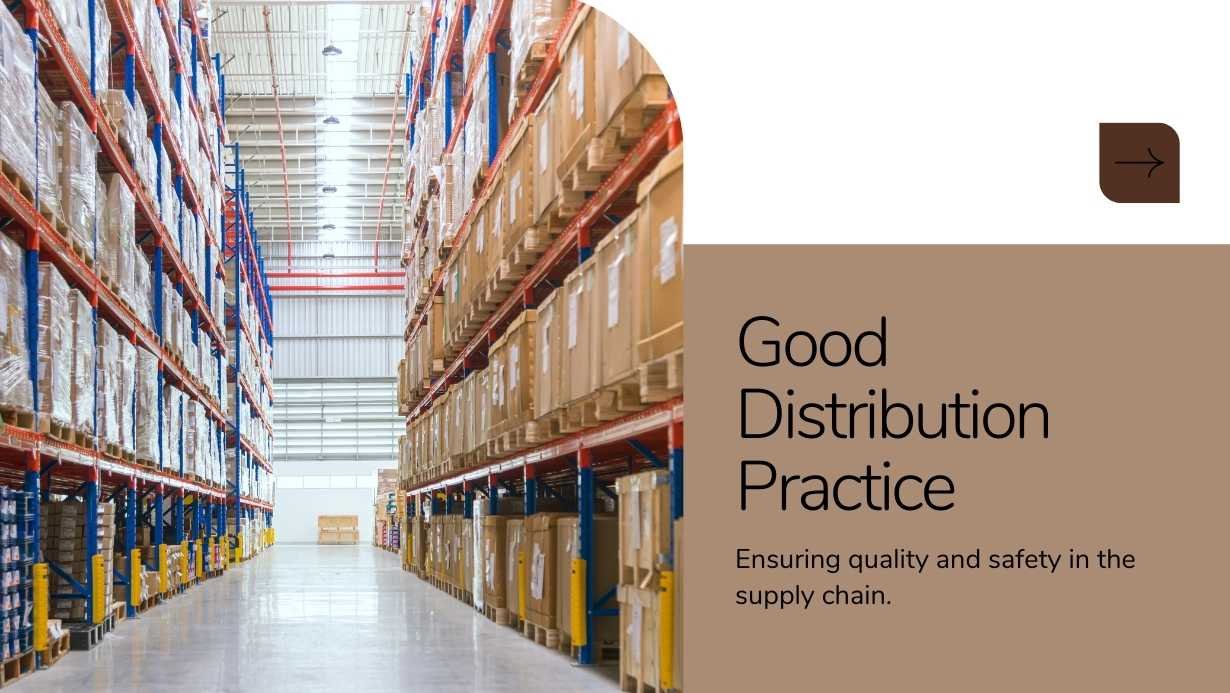
Good Distribution Practice (GDP) focuses on the proper storage, transportation, and distribution of pharmaceutical products. GDP regulations aim to ensure that products are handled and transported under appropriate conditions to maintain their quality, safety, and efficacy.
Key elements of GDP include:
- Temperature control and monitoring
- Proper storage and handling procedures
- Documentation and record-keeping
- Supplier qualification and auditing
- Distribution chain security
- Product traceability and recall procedures
- Quality management system for distribution
GDP compliance is critical for preventing product degradation, contamination, and other risks associated with improper storage and transportation. It ensures that pharmaceutical products reach patients in optimal condition.
Good Pharmacovigilance Practice (GVP)

Good Pharmacovigilance Practice (GVP) focuses on the detection, assessment, understanding, and prevention of adverse effects or any other drug-related problems. GVP regulations require pharmaceutical companies to establish robust pharmacovigilance systems to monitor the safety profile of their products throughout their lifecycle.
Key elements of GVP include:
- Adverse event reporting and management
- Risk management planning
- Signal detection and evaluation
- Periodic safety update reporting
- Post-authorization safety studies
- Quality management system for pharmacovigilance
GVP compliance is essential for ensuring the ongoing safety and benefit-risk assessment of pharmaceutical products. It helps identify and mitigate potential risks associated with the use of drugs, ensuring patient safety.
Importance of GxP Compliance in the Pharmaceutical Industry
GxP compliance is of utmost importance in the pharmaceutical industry due to the critical nature of the products being manufactured and distributed. The primary goal of GxP regulations is to ensure patient safety and product quality. By following GxP guidelines, pharmaceutical companies can:
- Ensure Product Quality: GxP compliance requires robust quality management systems and processes, leading to the production of high-quality drugs that meet the required standards. This, in turn, minimizes the risk of product defects, contamination, and other quality issues.
- Enhance Patient Safety: GxP regulations prioritize patient safety by establishing strict guidelines for clinical trials, manufacturing processes, and distribution practices. Adhering to GxP standards helps prevent adverse events and ensures that pharmaceutical products are safe for patient use.
- Achieve Regulatory Compliance: Regulatory bodies require pharmaceutical companies to demonstrate GxP compliance during inspections and audits. By meeting these requirements, companies can maintain good standing with regulatory authorities and avoid penalties or regulatory actions.
- Build Trust and Reputation: GxP compliance is a testament to a company’s commitment to quality and patient safety. It enhances the reputation of pharmaceutical manufacturers, fostering trust among healthcare professionals, regulatory authorities, and patients.
- Mitigate Business Risks: Non-compliance with GxP can have severe consequences, including product recalls, legal actions, and damage to brand reputation. By prioritizing GxP compliance, pharmaceutical companies can minimize business risks and ensure the smooth operation of their business.
5 Things You Need to Know for GxP Compliance
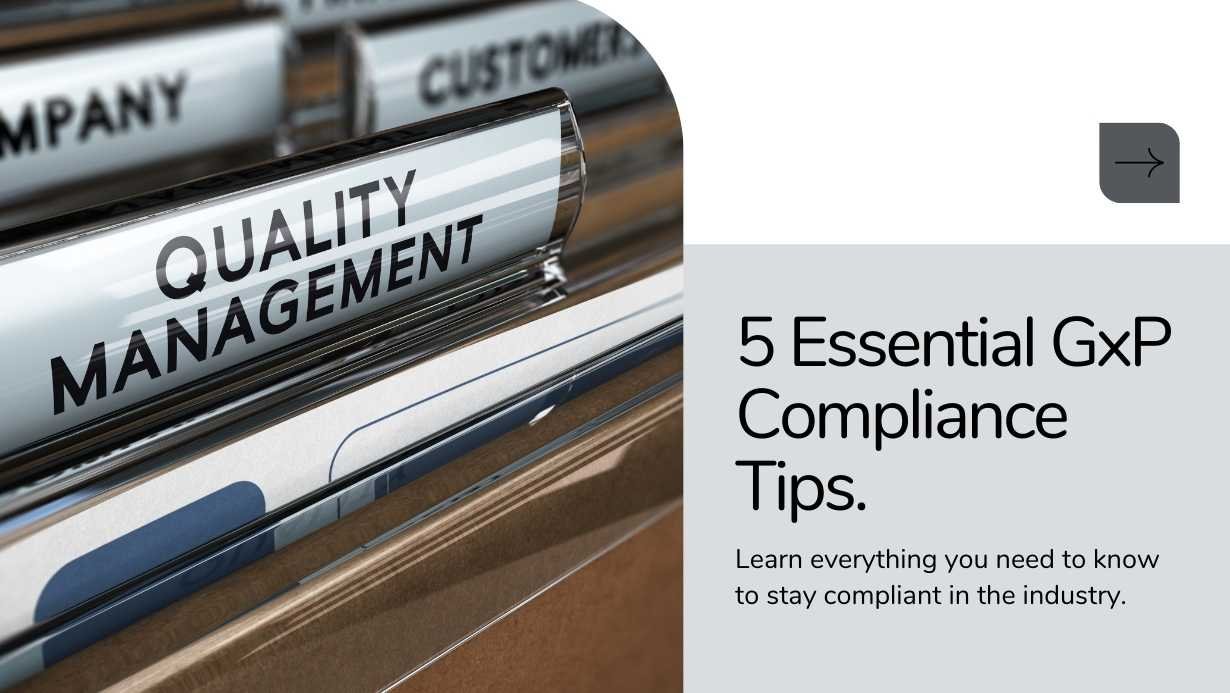
Achieving GxP compliance requires a comprehensive understanding of the key elements and considerations. Here are five essential aspects to consider for GxP compliance in the pharmaceutical industry:
1. Quality Management System
A robust Quality Management System (QMS) is the foundation of GxP compliance. It provides the framework for implementing and maintaining quality processes, procedures, and controls across all aspects of the pharmaceutical operation.
A well-designed QMS ensures that GxP requirements are met consistently and that quality is ingrained in every step of the product lifecycle.
The QMS should include the following components:
- Document control and management
- Training and competency management
- Change control processes
- Corrective and preventive actions (CAPA)
- Risk management
- Audits and inspections
- Supplier and vendor management
- Non-conformance and deviation management
By implementing a robust QMS, pharmaceutical companies can establish a culture of quality, ensure compliance with GxP regulations, and continuously improve their processes.
2. Documentation and Record-Keeping
Accurate and comprehensive documentation is a critical aspect of GxP compliance. GxP regulations require the creation and maintenance of various documents, including standard operating procedures (SOPs), batch records, protocols, reports, and quality records.
Documentation should be:
- Clear, concise, and unambiguous
- Version-controlled and regularly reviewed
- Consistently followed in practice
- Retained for the required period as per regulatory guidelines
Proper record-keeping ensures traceability, facilitates audits and inspections, and provides evidence of compliance with GxP regulations.
3. Training and Personnel Qualifications
GxP compliance relies on the competency and qualifications of personnel involved in the manufacturing, testing, and distribution of pharmaceutical products. Adequate training programs should be implemented to ensure that employees understand their roles, responsibilities, and the GxP requirements relevant to their job functions.
Key considerations for training and personnel qualifications include:
- Training needs assessment
- Documentation of training activities
- Periodic competency assessments
- Training records management
- Continued professional development
By investing in training and development, companies can enhance employee knowledge, ensure compliance, and foster a culture of quality.
4. Validation and Qualification
Validation and qualification processes are essential for ensuring the reliability and performance of equipment, systems, analytical methods, and processes in the pharmaceutical industry.
Validation demonstrates that a specific process consistently produces a result within predetermined specifications, while qualification confirms that equipment and systems are fit for their intended use.
Key validation and qualification activities include:
- Installation Qualification (IQ): Verifying that equipment is correctly installed and meets specifications.
- Operational Qualification (OQ): Ensuring that equipment operates as intended and meets performance requirements.
- Performance Qualification (PQ): Demonstrating that a process consistently produces the desired results within predetermined specifications.
- Process Validation: Validating critical manufacturing processes to ensure product quality and consistency.
By conducting thorough validation and qualification activities, pharmaceutical companies can ensure that their processes and equipment meet regulatory requirements and produce high-quality products.
5. Risk Management
Risk management is an integral part of GxP compliance. It involves identifying, assessing, and mitigating risks that could impact product quality, patient safety, and regulatory compliance. A systematic approach to risk management helps prioritize resources, implement proactive measures, and prevent potential issues.
Key steps in the risk management process include:
- Hazard identification: Identifying potential hazards within each aspect of the pharmaceutical operation.
- Risk assessment: Evaluating the likelihood and impact of identified risks.
- Risk mitigation: Implementing measures to reduce or eliminate identified risks.
- Risk monitoring and review: Continuously monitoring and reviewing risks to ensure the effectiveness of mitigation measures.
By incorporating risk management into their processes, pharmaceutical companies can proactively address potential issues, ensure compliance, and improve overall quality and safety.
Challenges of GxP Compliance
Achieving and maintaining GxP compliance is not without its challenges. The dynamic nature of the pharmaceutical industry, evolving regulations, and increasing supply chain complexity present several obstacles. Some of the key challenges include:
Evolving Regulations
The regulatory landscape is constantly evolving, with new guidelines and requirements being introduced regularly. Staying up to date with these changes and ensuring compliance can take time for pharmaceutical companies.
It requires continuous monitoring of regulatory updates, effective communication channels with regulatory agencies, and proactive adjustments to processes and procedures.
Increasing Supply Chain Complexity
The globalization of the pharmaceutical industry has led to complex and interconnected supply chains. Managing and ensuring compliance across multiple suppliers, contract manufacturers, and distributors can be challenging.
Pharmaceutical companies must implement robust supplier qualification and management processes, establish clear contractual agreements, and conduct regular audits and inspections to ensure GxP compliance throughout the supply chain.
Importance of GxP Compliance Auditing
Internal and external audits play a crucial role in GxP compliance. Internal audits help identify and address potential compliance gaps, while external audits by regulatory agencies ensure adherence to GxP regulations.
The frequency and scope of audits can vary depending on the regulatory requirements and the company’s risk profile. Pharmaceutical companies need to establish effective audit programs, maintain audit readiness, and address audit findings in a timely manner.
Tools for GxP Compliance
Achieving and maintaining GxP compliance requires the use of appropriate tools and technologies. Here are some key tools that can support GxP compliance in the pharmaceutical industry:
Electronic Quality Management System (eQMS)

An electronic Quality Management System (eQMS) provides a centralized platform for managing quality processes, documentation, and records. It allows for efficient document control, training management, deviation management, and CAPA workflows.
An eQMS helps streamline compliance activities, improve collaboration, and ensure the integrity and accessibility of critical quality data.
Computerized System Assurance (CSA)
Computerized System Assurance (CSA) tools are designed to ensure the integrity, security, and compliance of computerized systems used in the pharmaceutical industry. These tools help validate computerized systems, manage change control, and ensure data integrity. CSA tools can include features like automated testing, audit trails, and user access controls.
Laboratory Information Management System (LIMS)
A Laboratory Information Management System (LIMS) is a software solution designed to streamline laboratory workflows, data management, and regulatory compliance in the pharmaceutical industry.
LIMS tools help manage sample tracking, test scheduling, results recording, and instrument integration. They also provide features for data integrity, audit trails, and compliance with GLP requirements.
Electronic Data Capture (EDC)
Electronic Data Capture (EDC) tools enable the collection, management, and analysis of clinical trial data electronically. EDC systems replace traditional paper-based data collection methods, improving data accuracy, security, and compliance with GCP guidelines. EDC tools also provide features for real-time data monitoring, query management, and reporting.
By leveraging these tools, pharmaceutical companies can streamline compliance processes, improve data integrity, and enhance overall efficiency in GxP operations.
GxP compliance is relevant to industries such as pharmaceuticals, biotechnology, medical devices, food and beverages, cosmetics, and healthcare, where the quality and safety of products are critical.
Organizations can achieve and maintain GxP compliance by implementing robust quality management systems, conducting regular audits, providing employee training, and staying informed about regulatory changes.
GxP training should be conducted regularly, with frequency determined by regulatory requirements and organizational policies. New employees should receive training upon onboarding, and ongoing training should be provided to all staff.
Boost Your GxP Compliance Now
GxP compliance is a critical requirement for pharmaceutical manufacturers. It ensures the safety, efficacy, and quality of drugs and medical products throughout their lifecycle.
By understanding the various GxP regulations, implementing robust quality management systems, and leveraging appropriate tools, pharmaceutical companies can achieve and maintain GxP compliance.
To stay ahead in the ever-changing pharmaceutical landscape, it is important to continuously monitor regulatory updates, invest in employee training and development, and foster a culture of quality and compliance. By prioritizing GxP compliance, companies can enhance patient safety, build trust, and ensure long-term success in the highly regulated pharmaceutical industry.
Remember, GxP compliance is not a one-time effort but an ongoing commitment to quality and patient safety. Embrace the challenges, leverage the tools, and stay up to date with regulatory requirements to ensure your company’s success in the pharmaceutical industry.

